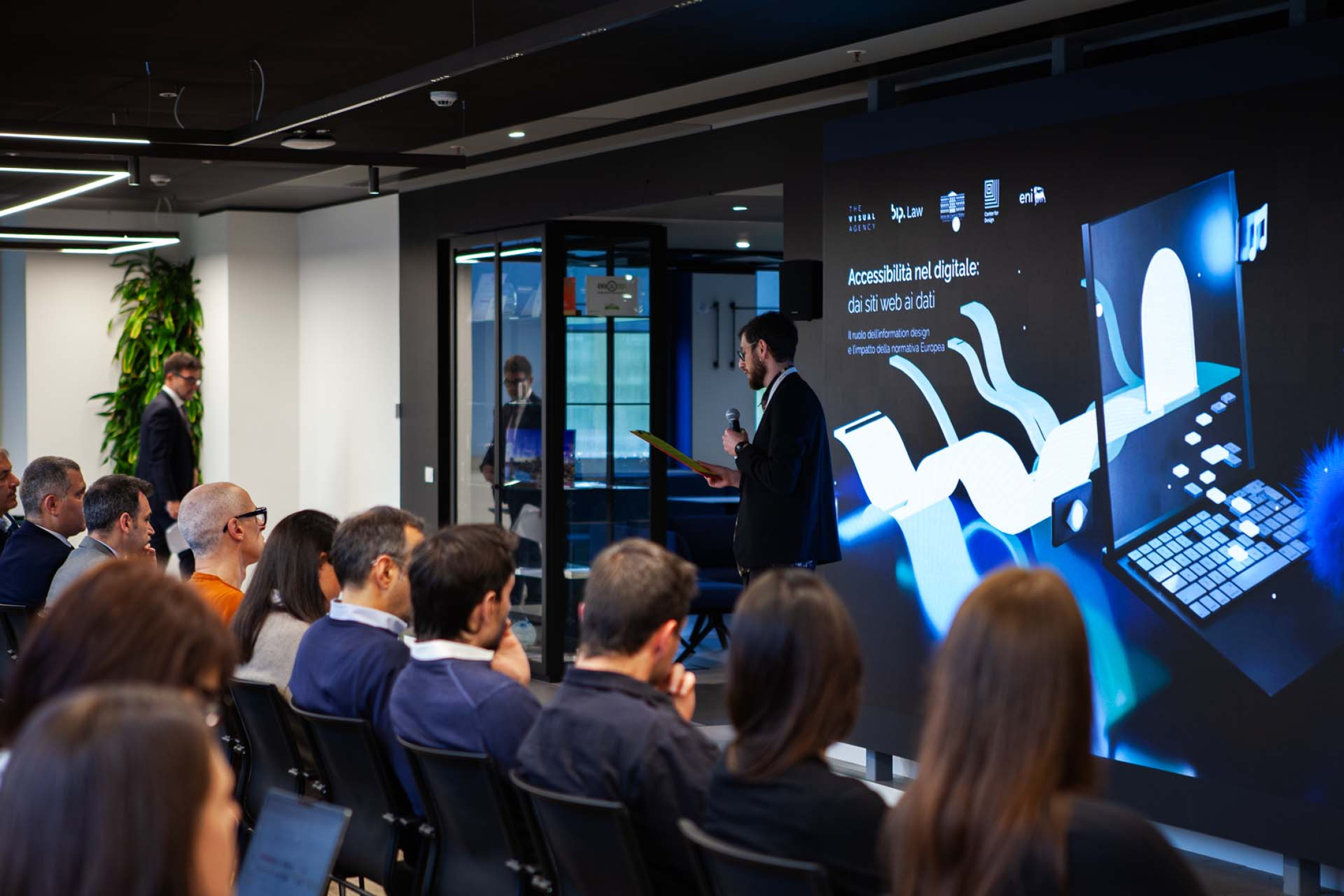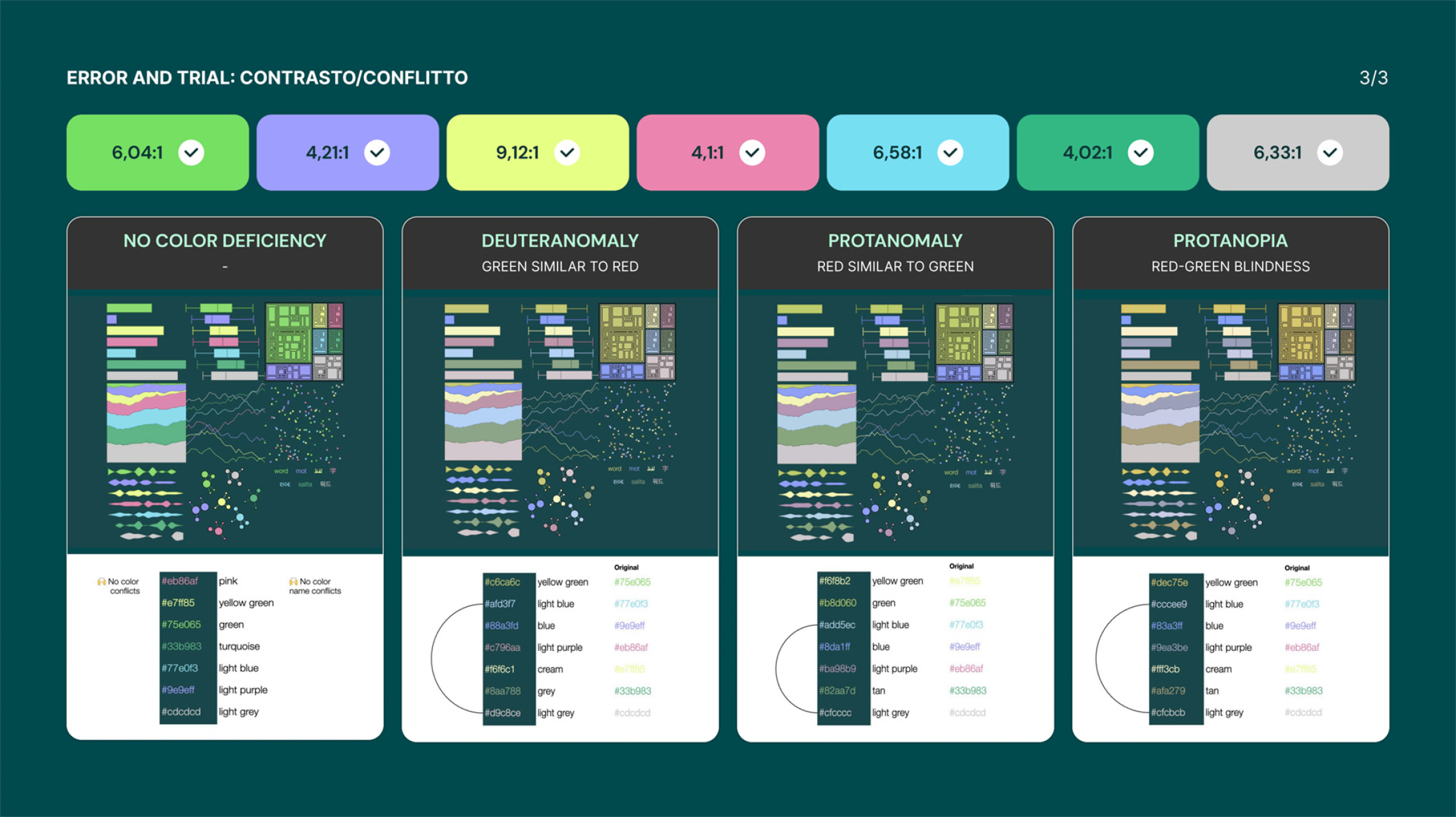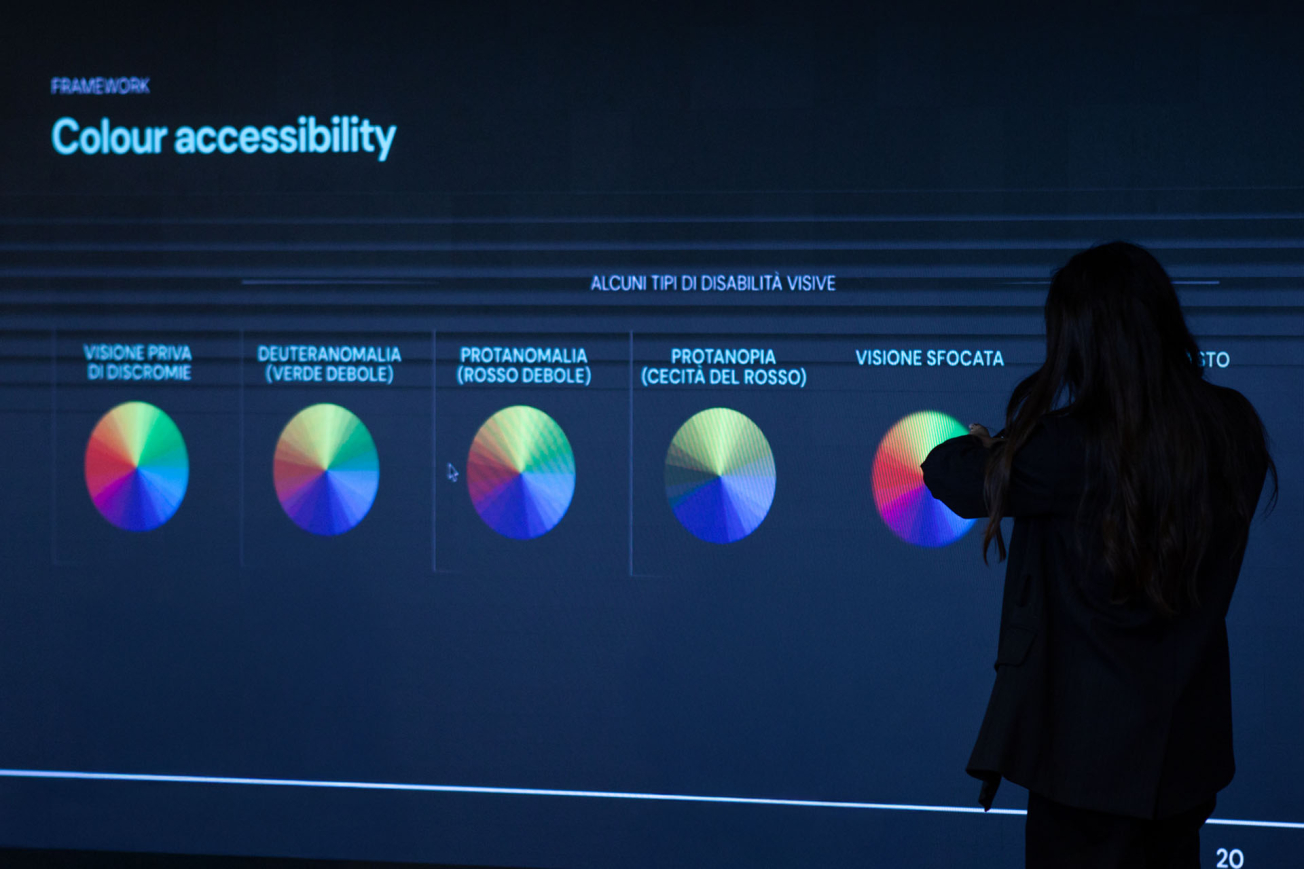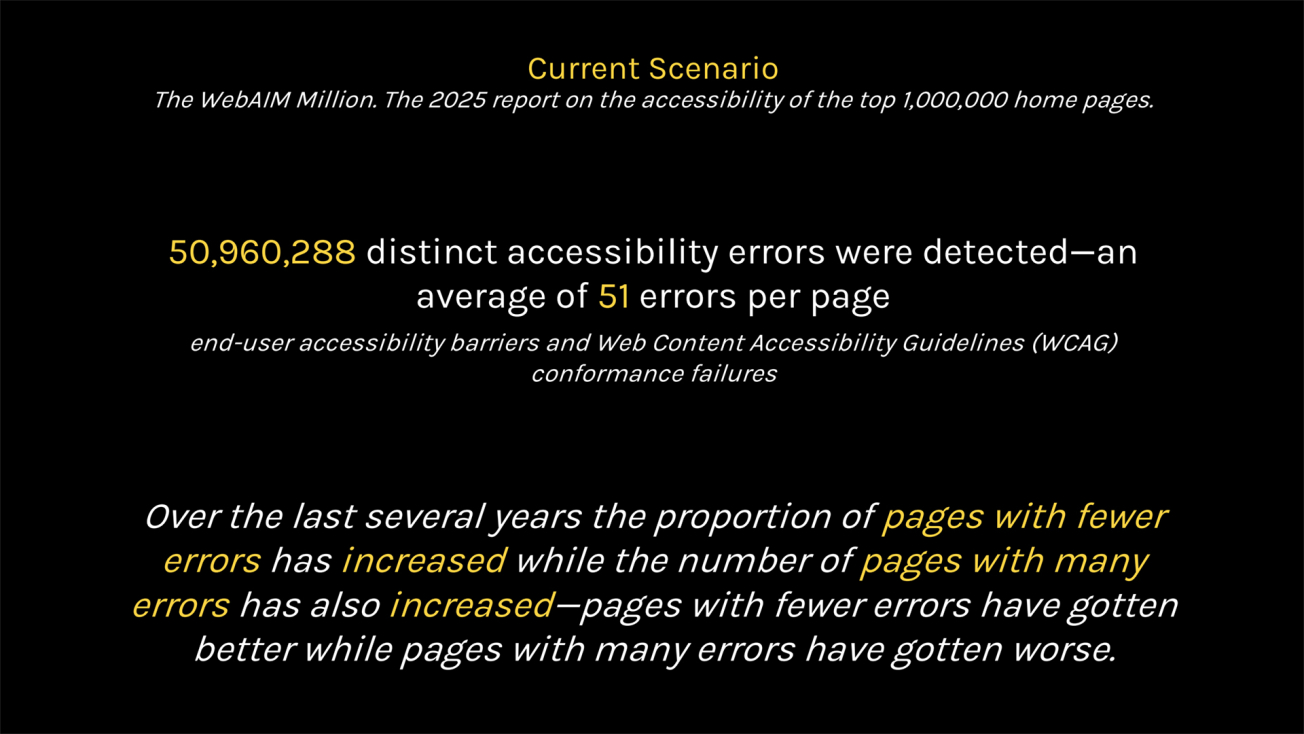On April 15, 2025, The Visual Agency hosted the event Digital Accessibility: From Websites to Data, a day of dialogue and in-depth discussion on one of the most crucial and challenging topics in digital transformation. The meeting brought together legal experts, designers, researchers, corporate representatives, and individuals with direct experience of disability, offering a comprehensive 360-degree view on how to promote digital inclusion.


From regulatory to design perspectives, and including direct user experiences, the goal was to foster a culture of accessibility as a right and a shared responsibility, going beyond legal obligations to truly value people.
Inclusion was the common thread throughout all the talks. As highlighted by Daniele Cutolo, LLM lawyer at Bip Law, accessibility regulations are not merely legal constraints but reflect a fundamental right to access information and participate in the digital world. From Italy’s Stanca Law of 2004 to the more recent EU directives, there is now a solid legal framework setting minimum standards — but also creating opportunities for organizations that aim to go further.
Highlighting the importance of user perspectives, Dr. Francesco Cusati, accessibility expert at the Milan Institute for the Blind, gave a live demonstration of how assistive technologies support the autonomy of visually impaired users. Through voice commands and touch-screen navigation, he illustrated the practical use of screen readers and mobile devices to access content, forms, and digital services. The Institute has long been active in training, awareness, and technological experimentation, promoting a hands-on, updated culture of accessibility.


In the same spirit, Beatrice Bazzan, digital designer at The Visual Agency, gave a talk in which she shared insights and design practices related to accessibility in data visualization. After mentioning several projects carried out for Banca Etica and PoliS-Lombardia, Bazzan focused on the development of a color palette accessible to people with low vision and color blindness, presenting a dedicated research paper. This is an often-overlooked area that highlights how even seemingly simple choices—such as defining color palettes and contrasts—can have a real impact, even though they represent just one part of the broader landscape of accessibility.

Closing the event, Professor Paolo Ciuccarelli broadened the perspective with a call to action. According to WebAIM data, many digital platforms still have significant room for improvement, especially when it comes to visual and interactive content. Ciuccarelli urged designers to work with empathy and precision, proposing a human-centered approach that considers not just tools, but also the emotional, cognitive, and social context in which digital interactions happen.
Conclusion: accessibility as a shared value
The final message of the event was clear and compelling: digital accessibility is a matter of equity, efficiency, and vision. More than 1.3 billion people around the world live with a disability — not counting temporary or invisible conditions. Making digital services accessible means reaching more users, improving experiences for everyone, and creating a positive societal impact. In a world where inclusion is increasingly recognized as a core value, designing for accessibility is not only the right thing to do — it’s the smart thing to do.